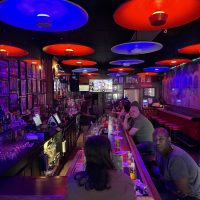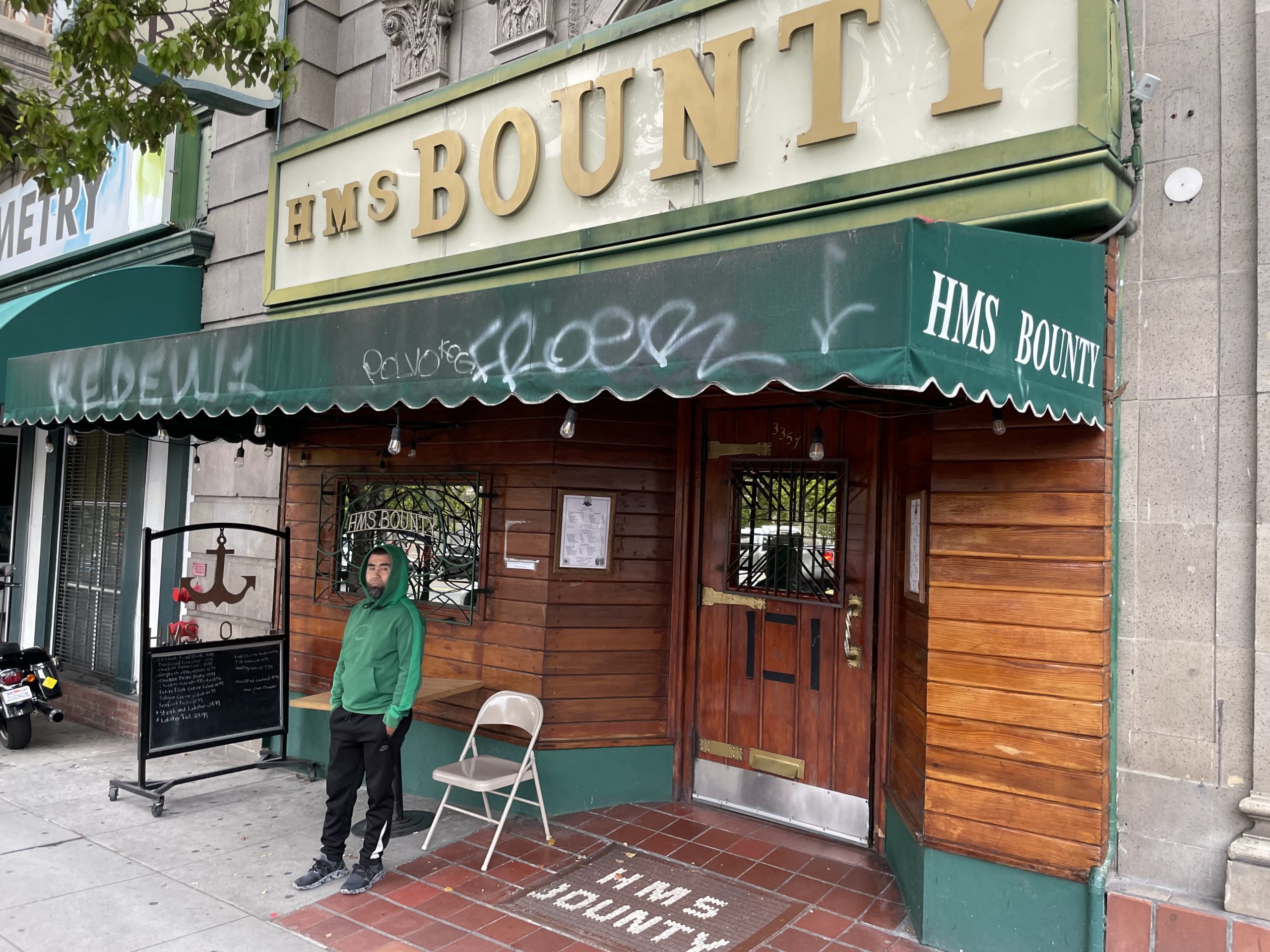Frolic Room
Los Angeles, California

Field Rating
9
out of 10
Finding the word "Nina" in the mural after a few drinks provides a nice challenge.
The Basics
6245 Hollywood BlvLos Angeles, CA 90028
Connect
In Short
Field Note
Visitors to Los Angeles quickly find out that the Hollywood Walk of Fame isn’t quite the idealized, glamorous location it may seem. Between tourist crowds, sketchy stretches of Hollywood Boulevard and about a dozen men dressed in Spiderman outfits looking for donations, perception and reality do not always match in this part of Los Angeles. But one nearby dive bar gem is the Frolic Room, a slice of what once made its Hollywood Walk of Fame-adjacent location a hub of old Hollywood activity.
Likely founded in 1930 and operated as a speakeasy attached to the historic Pantages Theater next door, Frolic Room went legit in 1934. Hollywood lore ratcheted up a notch when Howard Hughes purchased both the Pantages Theater and Frolic Room in 1949. Among countless other celebrities, Frank Sinatra and Judy Garland drank here, the Frolic Room benefitting as the post-Oscars drinking hub during the Pantages’ run of Academy Award ceremonies from 1949 to 1960. Charles Bukowski was a frequent visitor as well, his patronage immortalized in a framed photo over the cash register.
The color of the neon sign pops at night, no small feat given the competition for visual attention along the Los Angeles dive bar’s stretch of Hollywood Boulevard
Initially operated as Bob’s Frolic Room, the name was eventually shortened, producing the now iconic neon sign above the front door set against a black, corrugated exterior wall. The color of the neon sign pops at night, no small feat given the competition for visual attention along the Los Angeles dive bar’s stretch of Hollywood Boulevard. Simple brown trim marks the door and a single, barred window behind a metal grate that thankfully lets in precious little daylight.
Frolic Room’s celebrity pedigree is immortalized by the massive, intricate mural that runs the full length of the space. Owner Robert Nunley, who purchased Frolic Room in 1982, has stated that mural is not an Al Hirschfeld original piece but rather a scale reproduction of Hirschfeld’s source artwork. Installed in 1963, the mural captures the celebrity culture of the time period, depicting Marilyn Monroe, Clark Gable, Groucho Marx and others enjoying a drink (or series of drinks) within Frolic Room. Hirschfeld’s signature feature of hiding “Nina,” the name of his daughter, within his artwork holds true here as well, “Nina” showing up three times within the mural (you’ll have to find them for yourself).
And of course no Hollywood dive bar history is complete without a dose of noir, Frolic Room infamous as the last known sighting of real life Black Dahlia Elizabeth Short. The crime, thanks to its gruesome nature that will not be further described here, captured the country’s attention and is as of yet unsolved, leading to numerous documentaries, theories and stories on the case over the years.
The signature visual element inside is the unique set of red and blue disk-shaped lamps that hang from the ceiling.
As a drinking establishment itself, Frolic Room provides a needed dose of affordability to a city where even dive bar drinking can be pricey. Because of its tourist-friendly location, assembled crowds vary wildly from regulars to those stopping in for a quick drink. The celebrity-laden mural lines one wall, the opposite wall behind the bar covered by framed photos of Frolic Room owners and patrons of years past in addition to the odd celebrity here or there. Aside from the mural, the signature visual element inside is the unique set of red and blue disk-shaped lamps that hang from the ceiling and give the Frolic Room space a unique glow.
Not to be overlooked is the small table near the front of the Frolic Room footprint that can easily be missed, four stools around a small table commanding a secluded alcove in what can otherwise become a crowded space. And there are more secrets to be uncovered, no doubt, including a reported secret door in the roof of the Frolic Room structure that provided covert access to the Pantages Theater, enabling actors to crawl through and grab a drink after or even during a performance.
Related Reviews
Tiki-Ti
1961 tiki trailblazer.
HMS Bounty
Nautical food & grog.
Drawing Room
Windowless Los Feliz outpost.
















